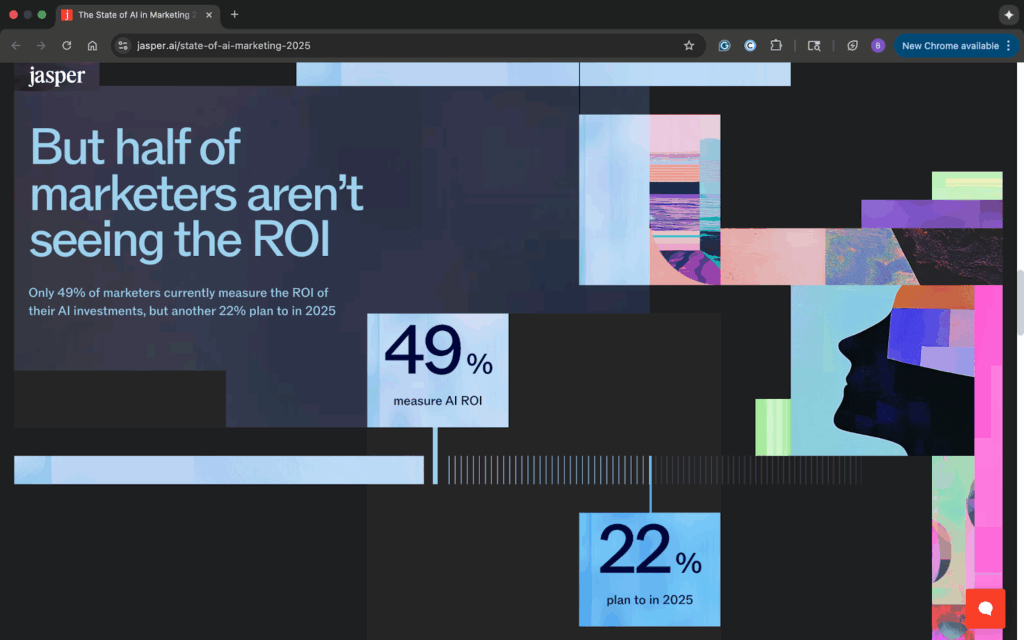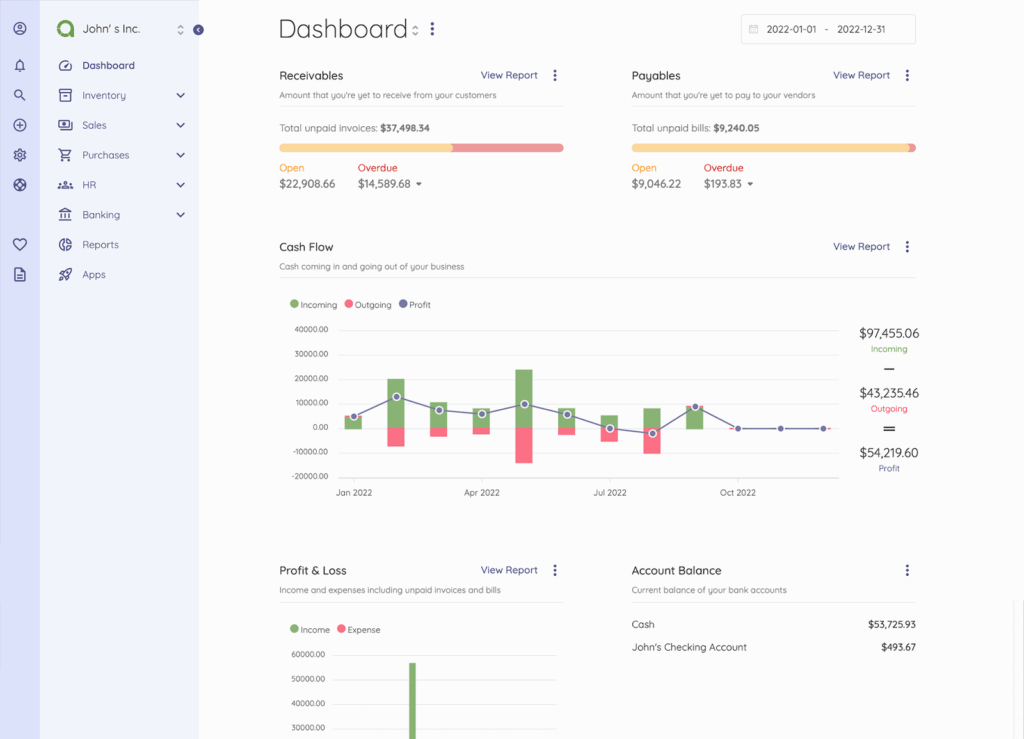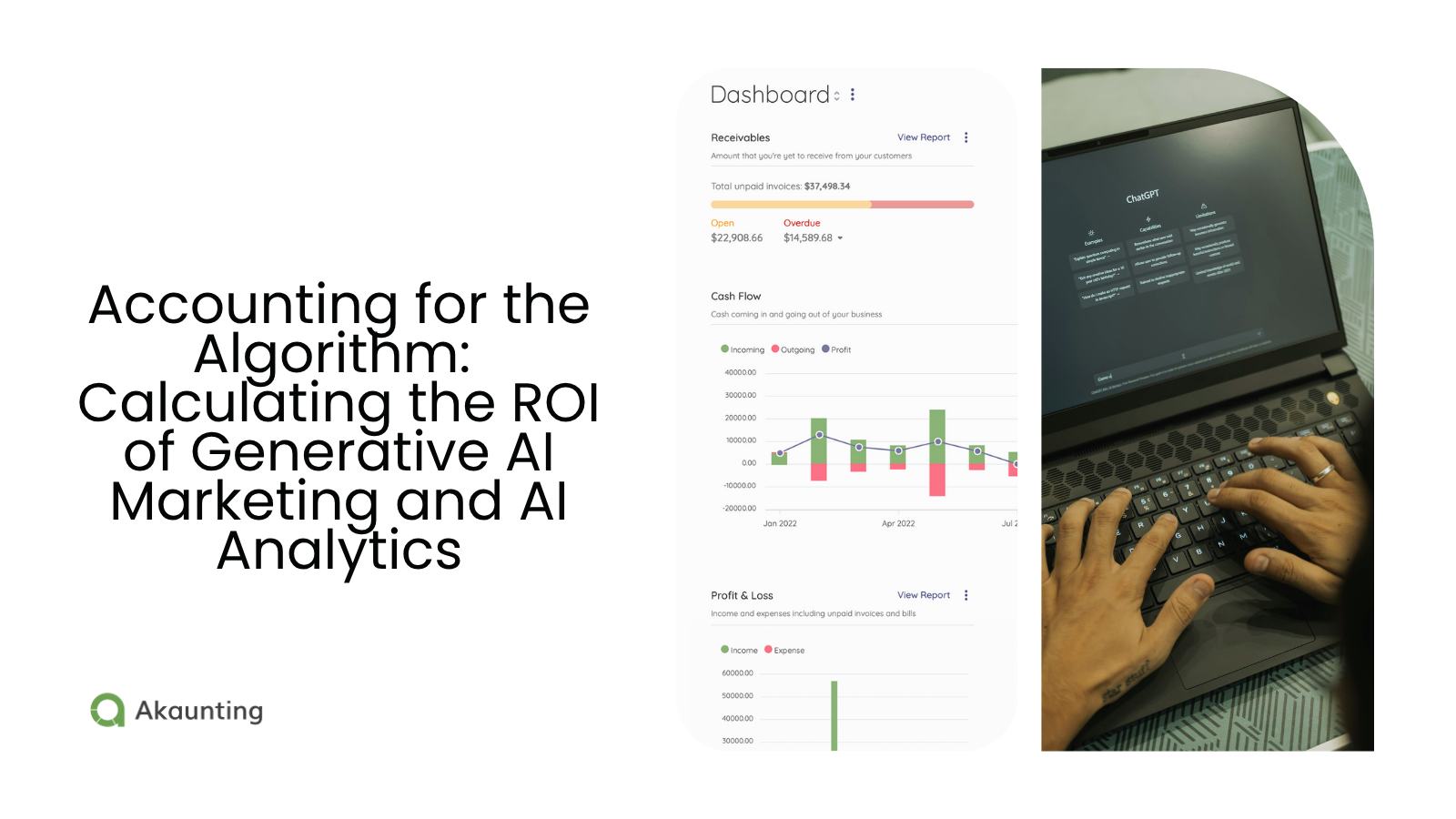Accounting for the Algorithm: Calculating the ROI of Generative AI Marketing and AI Analytics
Reading Time: 6 minutesYou’ve seen the buzz around generative AI. Marketers call it the next big thing. Analysts say it’s rewriting the rules of data-driven growth.
But is it actually paying off?
Adopting AI tools looks great on a strategy slide, but just like your business finances, the numbers only tell the truth when you track them. Without measuring the ROI of generative AI marketing and AI analytics, it’s impossible to know if they’re working.
Without that insight, how can you determine if AI is cutting costs, boosting conversions, or just adding another line item to your budget?
In this guide, we’ll walk you through what makes AI a measurable business asset. Plus, you’ll learn how to calculate ROI step by step and which metrics to track.
Why Track Generative AI and AI Analytics ROI?
AI adoption is booming. From chatbots to predictive dashboards, every new tool promises smarter marketing, faster insights, and higher retained profits.
According to a 2025 Deloitte report, about 15% of organizations using generative AI have already hit measurable return on investment, and another 38% expect to reach that point within a year of investment.
Jasper AI’s survey found a similar result. 63% of marketers now use generative AI tools. However, only 49% track the return on their investment.

So, it doesn’t really matter if you can’t tie those promises back to results you can measure.
Tracking generative AI and AI analytics ROI is like tracking your fixed and variable business expenses. It shows whether what you’re putting in is worth what’s coming out. Without it, you’re operating on assumptions.
A company like Scent Split, which specializes in niche fragrances, offers a great example of how businesses can measure the real ROI of generative AI marketing.
By using AI-driven analytics to personalize fragrance recommendations, optimize ad copy, and predict customer preferences, Scent Split can attribute specific revenue gains to algorithmic decision-making.
Tracking performance data, from engagement rates on AI-generated campaigns to repeat purchase behavior, helps quantify how effectively AI contributes to brand awareness and sales growth.
How to Measure ROI Step by Step
Measuring the ROI of generative AI and analytics doesn’t have to feel like decoding a tech report. Think of it like balancing your books.
You’re tracking how much you spend and how much you gain to see if your efforts are paying off.
With a clear process, you can pinpoint where AI drives value and where it’s just creating noise. Here’s how to get started.
Step 1: List Every Cost That Goes into AI
Before you can measure returns, you need to know what you’re investing in. AI costs aren’t always obvious. They go beyond the software price tag.
Start writing down everything that contributes to your AI setup, such as:
- – Software and subscriptions: Monthly fees for content generation tools, data platforms, or analytics dashboards
- – Implementation costs: Setting up APIs, training data, or integrating AI with your existing systems
- – Labor and training: The time your team spends learning new tools, fine-tuning prompts, or cleaning data for accuracy
- – Data storage and processing: Costs for hosting and maintaining large datasets or cloud storage
- – Maintenance and upgrades: Ongoing improvements, software updates, or consulting support

When you add up these numbers, you see the true cost of your AI investment, not just the one that fits on a budget line.
Treat it the same way you’d track recurring business expenses. You need that transparency to calculate ROI that’s grounded in reality.
Step 2: Define What “Return” Means for Your Business
Now that you know what you’re spending, it’s time to decide what success looks like.
Your “return” can take many forms. It doesn’t always mean direct profit.
Ask yourself: What’s the main reason we started using AI?
Maybe it’s to:
- – Save time by automating manual digital marketing tasks
- – Increase revenue by improving campaign performance
- – Cut costs by reducing outsourcing or production hours
- – Boost productivity through better customer insights and faster decision-making
- – Enhance customer experience with more personalized engagement
Whatever your goal, write it down and attach measurable indicators. For example:
- – “Save 10 hours a week on content creation.”
- – “Increase click-through rates by 20%.”
- – “Reduce customer churn by 5%.”
When you track returns this way, your results are concrete, just like comparing monthly income to expenses.
Ultimately, what you want to see is how AI impacts your operations, your bottom line, and your time.
Step 3: Track Data That Connects Cost to Results
Now that you’ve identified what you’re spending and what success looks like, it’s time to connect the dots.
This is where numbers tell the story.

Pair your AI activities with measurable outcomes. For example, if you’re using artificial intelligence to create blog content or analyze ad performance, track how those efforts influence customer engagement, conversions, or lead quality.
- – Monitor time saved compared to manual work.
- – Measure increases in traffic, clicks, or sales tied to AI campaigns.
- – Review before-and-after data for every major project.
Consistency is the key. Use the same tracking method each month to ensure your data remains reliable.
To deepen this process, look at both short-term impact (e.g., campaign reach) and long-term growth (e.g., customer lifetime value). That’s how you uncover whether your investment is producing sustainable returns.
Measuring ROI in generative AI initiatives requires understanding how automation, personalization, and data-driven insights shape campaign performance.
For instance, AI marketing uses advanced analytics, natural language generation, and predictive modeling to tailor messaging across customer touchpoints.
It enables marketers to forecast engagement, automate A/B testing, and deliver hyper-personalized experiences that increase conversion rates.
When combined with AI-driven analytics, these strategies offer measurable transparency into campaign effectiveness, customer lifetime value, and overall marketing efficiency.
Step 4: Compare Results Over Time
A single month of results won’t tell you much. The real insight comes from watching your performance evolve over time.
Create a spreadsheet or dashboard to compare AI-driven metrics on a quarter-by-quarter basis. Track costs, time saved, and performance changes side by side.
This helps you see whether your tools are building momentum…or losing it.
For example, if your savings improved in Q2 but flattened in Q3, that’s a sign to review which processes or models need tuning.
Over time, these comparisons reveal which parts of your strategy create value and which just add complexity.
Use those insights to adjust budgets, reallocate resources, and keep your ROI trending upward.
Step 5: Use a Dashboard to Visualize ROI
Once you’re tracking regularly, bring your numbers to life.
Dashboards help you visualize results in a way spreadsheets can’t. And they keep everyone on your marketing teams aligned.
Use visuals to compare inputs and outputs, highlight trends, and flag inefficiencies early. A good ROI dashboard might include metrics like:
- – AI tool expenses
- – Revenue generated from AI-led campaigns
- – Time saved on manual work
- – Engagement and retention data
Visibility is what it’s all about. When you see the numbers, you can act faster. And when leadership asks whether AI is worth the investment, you’ll have the proof right in front of you.
Over time, your dashboard becomes a decision-making tool. It helps you justify spending, forecast growth, and make confident calls about scaling AI across your business.
Common ROI Tracking Mistakes
Even with the best tools, measuring generative AI marketing and AI analytics ROI can go sideways fast. The problem isn’t always the tech. It’s how you track, interpret, or present results.
Avoiding these common mistakes will help you maintain honest numbers and a grounded strategy.
Ignoring the Full Picture of Customer Data
Many businesses track surface metrics like clicks or impressions but overlook what’s happening behind them.
When you fail to connect results back to your customer data, you miss out on understanding who is responding, why they’re engaging, and what drives conversions.
Measuring the Wrong Marketing Efforts
Not every click or view counts as success. Many teams track engagement or impressions but overlook whether those actions lead to conversions, repeat customers, or revenue.
Map every campaign metric back to a business goal. That might mean connecting email opens to sales or linking ad spend to customer retention.
Overlooking the Cost of Large Language Models (LLMs)
When companies experiment with generative AI, they often underestimate the hidden costs associated with running LLMs, including data processing power, integration, and maintenance. Those behind-the-scenes expenses can reduce profit margins.
Document every resource that supports your AI system, including training time and technical upkeep.
The Bottom Line
Tracking generative AI marketing and AI analytics ROI might not sound too thrilling. But when you see where your AI tools actually make you money, that’s the kind of math worth celebrating.
Follow the steps in this guide to make sure your AI efforts translate into measurable profit.
PS: Want an easy way to stay on top of it all? Use a platform like Akaunting. It keeps your income, expenses, and ROI in one place, so you can focus on building your next big win.
Sign up for free and start tracking like a pro.
About the Author

Kelly Moser is the co-founder and editor at Home & Jet, a digital magazine for the modern era. She’s also the content manager at Login Lockdown, covering the latest trends in tech, business and security. Kelly is an expert in freelance writing and content marketing for SaaS, Fintech, and ecommerce startups.




